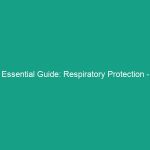Good Morning Team!
Today, we’re diving into an essential topic that affects all of us: Essential Documentation of Safety Training: Maintaining Accurate Records. This isn’t just about paperwork; it’s about ensuring our Safety and well-being on the job. Accurate records of safety training can help us prevent accidents, comply with Regulations, and create a safer workplace for everyone.
Understanding Essential Documentation of Safety Training
So, what does essential documentation of safety training really mean? At its core, it refers to the processes of recording and maintaining accurate records of all safety training activities. This includes everything from initial training sessions to refresher courses and ongoing education. Why is this important? Because accurate records not only demonstrate compliance with safety regulations but also help in identifying training needs, evaluating effectiveness, and ensuring that all employees are adequately prepared for their roles.
Many people believe that once they receive training, there’s no need to document it further. However, this is a misconception. In reality, documentation is crucial for several reasons:
- It provides proof of training for audits and inspections.
- It helps track employee progress and training completion.
- It ensures that safety protocols are consistently followed.
Key Hazards, Risks, and Safety Considerations
Inadequate documentation of safety training can lead to significant Hazards and risks within our workplace. For instance, if an employee has not been properly trained on handling hazardous materials, the risk of accidents increases exponentially. This can result in not only injury but also potential legal repercussions for our organization.
Here are some specific hazards that can arise from poor documentation:
- Increased accidents: Without proper records, it can be challenging to ensure that every employee is trained in necessary safety protocols.
- Compliance violations: Regulatory bodies such as OSHA require accurate records to ensure compliance with safety Standards.
- Inadequate response to emergencies: If employees are not properly trained, they may not know how to react in emergency situations, putting everyone at risk.
Best Practices, Procedures, & Actionable Advice
Now that we understand the importance of documentation, let’s discuss some Best Practices for maintaining accurate records of safety training:
1. Develop a Standard Operating Procedure (SOP)
Create a comprehensive SOP for documenting safety training. This should include details on how training sessions are conducted, who is responsible for documentation, and the format in which records should be kept.
2. Use a Centralized Database
Implement a centralized database to store all training records. This ensures that records are easily accessible and reduces the risk of losing important documentation.
3. Regularly Update Training Records
Make it a habit to update training records immediately after each training session. This includes not just the names of attendees but also the topics covered and any assessments conducted.
4. Conduct Regular Audits
Schedule regular audits to review training records and ensure compliance with both internal policies and external regulations. This can help identify gaps in training and areas for improvement.
5. Provide Continuous Training
Safety training should not be a one-time event. Regularly schedule refresher courses and updates to keep everyone informed about new Procedures and regulations.
Case Study: Learning from the Past
Let’s take a look at a real-world incident that highlights the importance of maintaining accurate records. In 2019, a manufacturing plant faced significant fines after an employee was injured due to a lack of proper training on machine Operation. The investigation revealed that the employee’s training records were incomplete, which led to questions about the adequacy of training provided. This incident underscores the critical nature of documentation and compliance.
Regulations, Standards, and Compliance
There are various regulations that govern safety training documentation, most notably from osha (Occupational Safety and Health Administration). OSHA mandates that employers provide their employees with a safe and healthful workplace, which includes proper training and documentation. Failure to comply can result in hefty fines and legal issues.
It’s essential that we all understand these regulations and make compliance a top priority. Not only does it protect us legally, but it also fosters a culture of safety within our organization.
Employee Engagement & Discussion
Now, I’d like to open the floor for discussion. Think about your experiences with safety training:
- What challenges have you encountered related to documentation?
- How can we improve our current processes for maintaining training records?
- Do you feel adequately trained for your job responsibilities?
Your input is invaluable in helping us enhance our safety practices and ensure that everyone is prepared for the tasks at hand.
Conclusion & Key Takeaways
In conclusion, maintaining accurate records of safety training is not just a regulatory requirement; it’s a vital component of our overall safety strategy. By adhering to Best Practices for documentation, we can protect ourselves, our coworkers, and our organization from potential risks.
Remember, safety is a shared responsibility, and it starts with each of us prioritizing training and documentation. Thank you all for your attention and for your commitment to maintaining a safe workplace.


